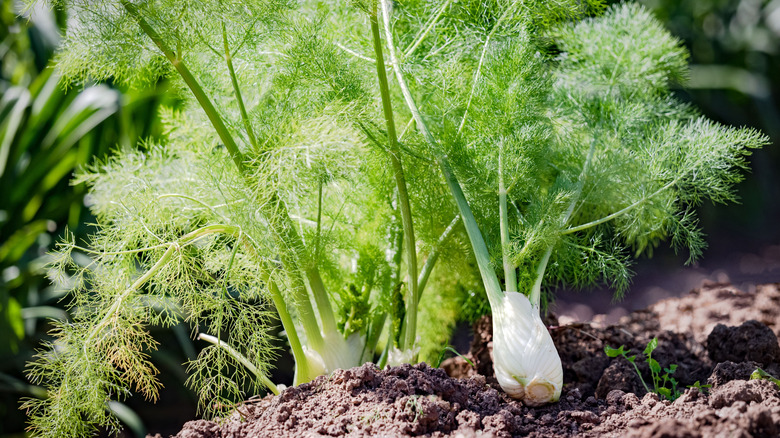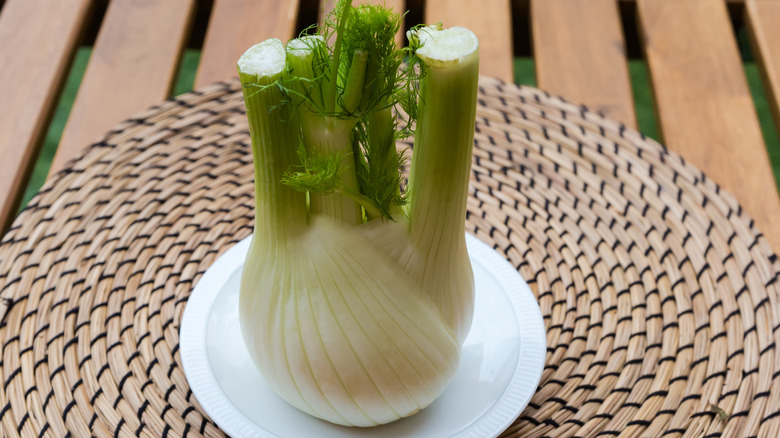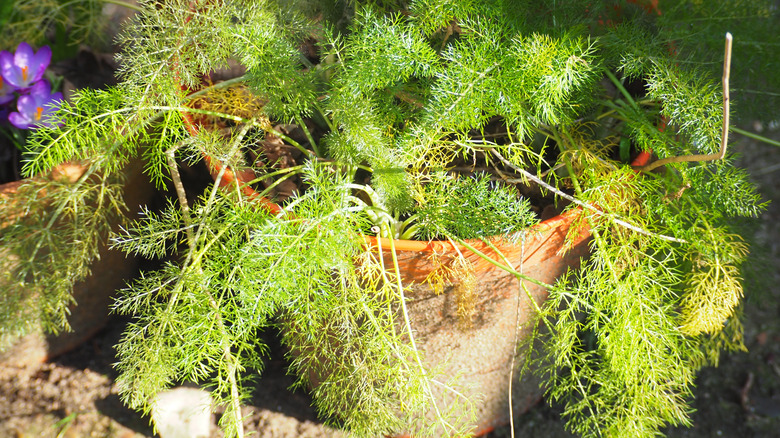How To Easily Regrow Fennel For An Endless Supply Of Fresh Herbs
If you're like most home cooks, the thick base of a fennel bulb usually goes straight into the trash or the compost bin. Breaking that habit is the fastest way to get an endless supply of fresh fennel right from your windowsill. Fennel (Foeniculum vulgare), known for its feathery green fronds and distinctive licorice flavor, is one of the easiest kitchen scraps to regrow. The part of the bulb that is often thrown away is the exact spot where new roots and shoots are waiting to sprout.
You can grow a new plant by cutting the bottom section and placing it in water. Take the bulb and trim it, leaving about one to two inches of the base. Put the base into a shallow dish of water, root side down. Set the dish in a sunny area, and you'll see new shoots growing within a few days. When the bulb starts to grow roots, you can choose to keep it as is or transfer it into a deep pot so it can continue to grow in soil.
The easy water method for immediate fennel regrowth
Starting fennel propagation requires only a few household items and a little care. Start by picking the right container for the cutting. Clean takeout containers, small canning jars, or a shallow glass dish all work well. Place the fennel into the container, making sure the root base is down and the cut side is facing up. You need to add just enough water to cover the bottom of the base. Avoid submerging the entire bulb in water to prevent rot.
Place the dish on a sunny windowsill, preferably one that gets bright, indirect light throughout the day. To prevent the fennel from getting moldy, the water needs to be replaced every few days. You should begin to notice shoots growing from the top shortly after, and new roots will begin to grow from the base. To keep fennel growing in water, harvest the fronds occasionally. The plant will continue producing as long as it has sunlight and clean water. Be aware that one downside of growing fennel is its ability to inhibit the growth of nearby plants, so consider placement before growing it indoors.
Transplanting and garden growth
While the water method is an easy way to have a fresh supply of fennel right in your kitchen, transplanting the cutting into soil after 2 or 3 weeks will give you a bigger plant. The time is right when the new roots are large and strong enough to support the cutting. When moving the new fennel plant, find a deep pot and fill it with well-draining potting soil. Plant the cutting so the soil line sits where the new shoots emerge from the base. The pot should be placed in a sunny spot and watered regularly, especially during warmer weather.
Once the fennel is established in its pot, you can decide whether to keep it there or move it to an outdoor garden. If you want to move it outside, the best time of the year to plant fennel is during late spring or early summer, making sure not to disturb the roots too much. The transplanted fennel will grow well if the soil is kept consistently moist. Bulb fennel is susceptible to stress, and dry soil can cause the plant to bolt, or flower prematurely, which will ruin the texture of the stems. A thick layer of mulch around the plant will also help the soil from drying out between waterings.
When the time comes to harvest the fronds, you can leave the base in the ground, and more shoots will resprout from the bulb. Fennel is considered a short-lived perennial in USDA zones 4 through 9, but it can also be grown as an annual in cooler climates. It's important to note that this plant is considered invasive in California and in the Pacific Northwest.


